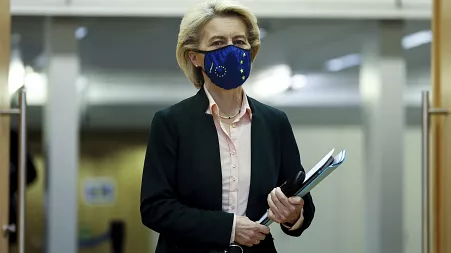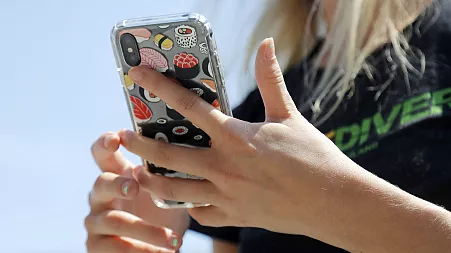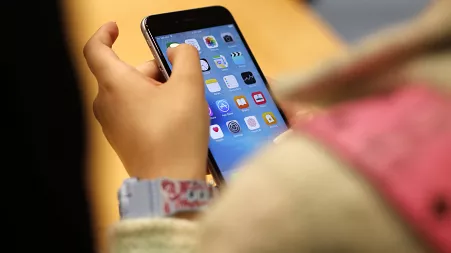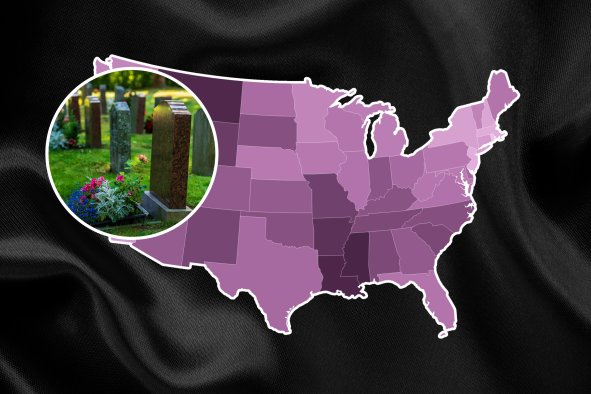"Kids these days": It's a phrase as old as time.
Every generation assumes the pastime of comparing their children's childhoods to their own. But for children's hospitals, analyzing young people's habits is not a game of "who had it worse." It's a matter of strategy—a chance to do better.
Generation Z, the group of people born between 1997 and 2012, is beginning to phase out of children's hospitals. A different population, Generation Alpha, is coming of age in their place.
Gen Alphas, those who were born and will be born between 2010 and 2025, share some overlap with their predecessors. But unlike Gen Zers—many of whom had a childhood sans iPhone—Gen Alpha kids are "basically growing up with cellphones in their hands," according to Dr. Derek Wheeler, executive vice president and chief operating officer of Ann & Robert H. Lurie Children's Hospital of Chicago (one of the nation's top children's hospitals, according to Newsweek's recent ranking).
As a result, Gen Alpha kids "have access to information all the time," Wheeler told Newsweek. "And so those are the kinds of demands that they're now placing on their medical providers."
Gen Alpha patients are bringing a sense of urgency to Lurie Children's by asking for quicker results. The hospital is working hard to accommodate.
"Improving [patients'] access to care and improving access to information about their care [has] really been a big strategic goal for us," Wheeler said. One way to achieve that goal is to increase utilization of MyChart, the messaging portal that allows patients to reach their providers asynchronously.
But speedy comms have their pros and cons. With MyChart, patients receive their X-ray or lab results at the same time as their physicians. Few can decipher the raw data without the doctors' interpretation, which usually comes later. That's where ChatGPT comes in. While AI isn't a replacement for a professional opinion, some patients and parents use it to make sense of their results in the interim.
For physicians like Wheeler—a pediatric hospitalist who has been working in children's hospitals for nearly 25 years—these changes take some getting used to. But he's grown quite fond of them.
"I think that [tools like ChatGPT] help us provide better care to our patients," Wheeler said. "I think those are all good changes. It's just different."
Gen Alphas' savviness with technology can also help them manage chronic conditions. Thanks to modern medicine, many once-fatal diseases are now survivable, but they often bring long-term side effects. Kids who once would have died in the ICU will live, but might require ventilatory support to breathe at home or dialysis to support their kidney function.
Fortunately, a Gen Alpha child can exercise some autonomy in these situations. Kids can use their own devices to keep tabs on their health; young diabetes patients continuously monitor their blood sugar with results sent directly to their cellphones. Doctors can download their results and track trends over time, leading to more informed treatment decisions, according to Wheeler.
Lurie Children's is making "targeted investments" in remote monitoring for certain conditions, Wheeler said. For example, some infants are born with hypoplastic left heart syndrome, a defect preventing normal blood flow on the left side of the heart. The condition requires babies to undergo a series of surgeries in their first two to three years of life.
There used to be a high mortality rate between the first-stage surgery and the second, which takes place closer to age 1, after the baby has already gone home. But with remote monitoring technologies, doctors can watch the infants' weight and oxygen saturation from afar, catching complications that would require them to be brought to the hospital sooner.
Remote monitoring "does provide a sense of comfort for our parents that have those kids," Wheeler said.
Despite these advancements, technology isn't a silver bullet for health. Lurie Children's has seen an uptick in obesity among the pediatric population. At the hospital's referral-based wellness and weight loss programs—which are currently full—the curriculum addresses phone and TV time, known contributors to a sedentary lifestyle.
It's not just the phones. Since COVID-19, more kids are presenting with mental illnesses at children's hospitals across the country: anxiety, depression, eating disorders. There's "a lot of speculation" about what, exactly, caused this uptick after the pandemic, Wheeler said. But the lockdown was undoubtedly a contributing factor.
"Nobody really knew what was going to happen," Wheeler said. "There was a lot of fear and anxiety, not only in kids, but also adults."
This multigenerational anxiety is something Dr. Melissa Young noticed, too. As an attending psychologist at Cincinnati Children's (also a top children's hospital, per Newsweek's recent ranking), Young works primarily with teens and young adults—so she's witnessing this generational shift firsthand.
Parents were home with their kids during the pandemic and could observe their behavior more closely. What they saw wasn't necessarily unusual, but the 24/7 feed set off more alarm bells. Thus, more parents are seeking external help, hopeful that therapists can "fix" their kids, according to Young.
"I was training a bunch of community-based therapists a few weeks ago, and one of them said that they feel like therapy has become an extracurricular activity," Young said. "There's really this disconnect between caregivers understanding their own limits and helping to implement boundaries, and how that has such a direct impact on their younger kiddos."
Millennial parents are well attuned to the potential downsides of electronic and social media usage. Coaching caregivers on technology policy is becoming increasingly common and increasingly easy, given their knowledge in the space, according to Young.
But media savviness brings its own challenges. Many caregivers struggle to set boundaries with their kids' technology use because they, too, struggle.
"All of that is really caregivers' responsibility to kind of be teaching and modeling for these younger generations, especially when they're being constantly inundated with different messaging and different realities on social media, gaming," Young said. "Because caregivers are taxed and there's so much going on, it feels easier to say, 'OK, you can do screens or video games and not have some of those brain-health things that we know are so crucial for development and daily functioning.'"
Young has also noted a significant increase in the number of young patients presenting with social anxiety. She attributes this in part to the pandemic, which prevented relationship-building at a crucial age. Now kids have a hard time communicating in person. Oftentimes, caregivers will try to accommodate by ordering for them at restaurants and asking questions for them in stores. But exposure is the necessary therapy here.
"Those day-to-day social skills are so incredibly important for such a large percentage of our youth, they haven't had that opportunity for quite some time," Young said.
Media literacy is also an important part of the conversation. Through social media realms like TikTok and Snapchat, conversations about mental and physical health conditions have increased. This has helped to reduce stigma and can lead to kids identifying with someone they see on social media and wondering if they have the same condition.
Overall, it's led to an increase in families seeking services. While this can help from a preventative care perspective, it can also lead to over-identification with diagnoses that might not be accurate for that patient.
Young has started asking what generated patients' concerns, and "about eight times out of 10, it's related to something that was seen on TikTok or an Instagram post."
"It's become such an integral piece of health care," Young continued. "We have a lot of work to do to combat misinformation around not only mental health conditions, but physical health conditions."
These demands are increasingly straining the health care system. Pediatric patients have been visiting emergency departments for mental health conditions much more frequently, according to a recent literature review. One study published by the National Library of Medicine found that between 2007 and 2016, ED visits increased 60 percent for children with mental health conditions and 329 percent for kids with deliberate self-harm. During the study period, general pediatric ED visits remained stable.
This is concerning to physicians, since EDs are not optimal environments for psychiatric healing and can even cause more trauma to young patients. Plus, the visits might not be necessary at all. The same study found that the percentage of children and youth treated for mental health conditions in EDs, then released, had increased by 70 percent over the decade. If the ED was the appropriate level of care for the patient, they would have been admitted to the hospital or transferred to a specialized facility.
Suffice it to say, the trend line is continuing—and rising—with Generation Alpha. But today's providers are increasingly aware of the ED's role in pediatric mental health cases, and can help parents find alternatives to stressful situations.
According to Young, "One of the most important things that mental health providers can do is to educate caregivers on what is a mental health crisis." Anything that occurs "outside of the norm" can be troubling to parents, but not every scary situation requires a higher level of care. In her practice, she works with patients and families to define a crisis and create a preventative action plan in case that crisis does occur.
A primary care provider is also vital to kids' health care, but to many, they're a waning fixture. About 25 million American children are considered "medically disenfranchised" because they lack access to a primary care provider, according to the National Association of Community Health Centers.
Cincinnati Children's is working to integrate mental health care into existing structures, so youth see both a primary care and behavioral health provider at annual well checks.
"It really helps to reduce the stigma, and it helps to build this concept of this longitudinal relationship that historically hasn't been present in mental and behavioral health," Young said.
The two-pronged team can collaborate more easily and intervene earlier when rooted in primary care. Plus, the frequent, real-time connection between a patient and their provider supplies an important educational opportunity for young people to learn about the mind-body connection and develop healthy habits, according to Young.
For both Young in Cincinnati and Wheeler in Chicago, access is a major concern. There is a severe shortage of youth mental health providers. Although 20 percent of U.S. children have a mental, emotional or behavioral disorder in any given year, on average, there are 14 child and adolescent psychiatrists for every 100,000 kids, according to the American Academy of Child and Adolescent Psychiatry.
From telemedicine to remote monitoring, health systems are working hard to expand children's care opportunities. The way Wheeler sees it, health systems—like kids—are always growing up.
"I think every generation is a little bit different, but I think the goals at the end of the day are the same," Wheeler said. "We want a healthy, thriving patient with good outcomes and quality of care, quality of life. Those goals will never change for health care organizations."
Disclaimer: The copyright of this article belongs to the original author. Reposting this article is solely for the purpose of information dissemination and does not constitute any investment advice. If there is any infringement, please contact us immediately. We will make corrections or deletions as necessary. Thank you.




